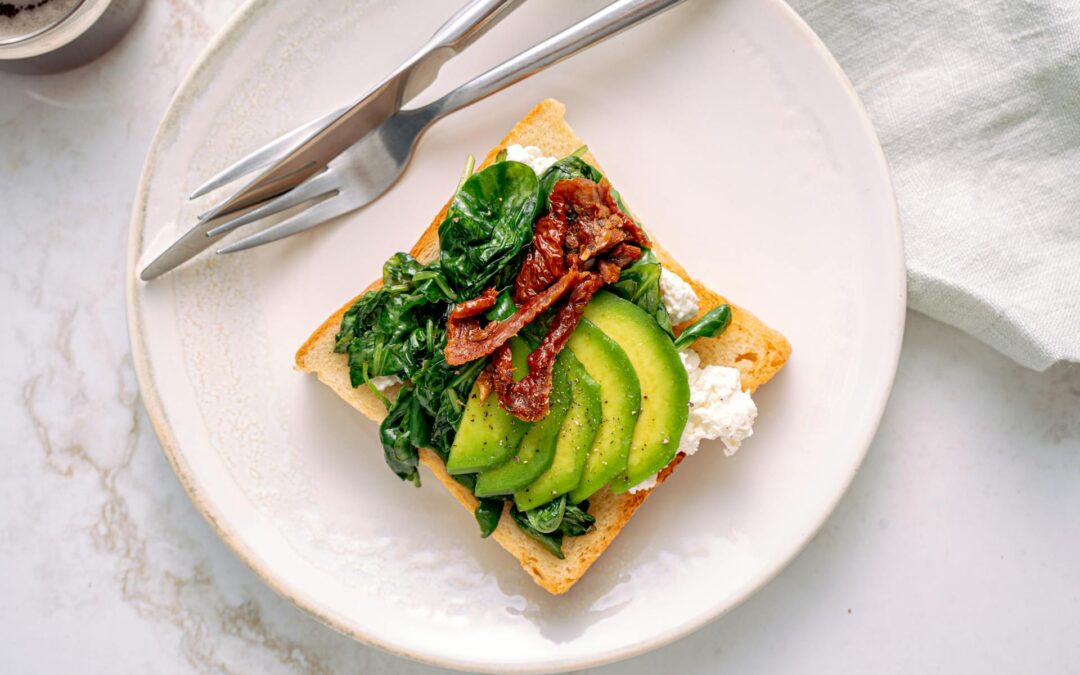Low-carb diets and fasting for fat loss have emerged as game-changing approaches in weight management. Each method offers unique benefits, but when combined, they create a synergistic effect that accelerates fat loss. In this article, we’ll explore the science, benefits, and practical steps to maximize the impact of these powerful tools.
What is a Low-Carb Diet?
Definition and Types
A low-carb diet emphasizes reducing carbohydrate intake while increasing protein and healthy fats. Common types include: (1)
- Ketogenic Diet: High fat, very low carbs.
- Atkins Diet: Structured phases with varying carb levels.
- Paleo Diet: Focuses on whole, unprocessed foods.
How Low-Carb Diets Work
By reducing carbs, the body lowers insulin levels, prompting it to burn stored fat for energy. This process supports fat loss and improves metabolic health. (2)
Benefits Beyond Fat LossLow-carb diets also help with:
- Stabilizing blood sugar levels.
- Reducing cravings.
- Enhancing mental clarity.
Understanding Fasting
What is Fasting?
Fasting involves cycles of eating and not eating. Popular types include: (3)
- Intermittent Fasting (IF): Eating within specific windows.
- Extended Fasting: Longer periods without food.
- OMAD (One Meal a Day): Consuming all calories in one meal.
Physiological Effects
Fasting triggers fat adaptation, enhances ketosis, and reduces insulin levels, optimizing the body’s ability to burn fat.
Dispelling Myths
Despite misconceptions, fasting doesn’t slow metabolism or cause muscle loss when done correctly.
The Science Behind Low Carb and Fasting Synergy
The combination of a low-carb diet and fasting creates a metabolic environment that is highly conducive to fat loss. Let’s dive into the mechanisms that make this pairing so effective:
Ketosis: The Cornerstone of Synergy
When following a low-carb diet, the body depletes its glycogen stores, shifting to fat as its primary energy source. This process produces ketones, which fuel the brain and muscles efficiently. Fasting enhances this state by extending the time the body remains in ketosis, amplifying fat-burning potential.
Hormonal Optimization
- Insulin Reduction: Both low-carb diets and fasting significantly lower insulin levels, a hormone that promotes fat storage. Lower insulin levels enable the body to access stored fat more readily.
- Increased Growth Hormone: Fasting triggers a rise in growth hormone levels, which helps preserve lean muscle mass while encouraging fat breakdown.
- Glucagon Activation: This hormone works in opposition to insulin, signaling the body to break down fat stores for energy during fasting periods.
Enhanced Fat Adaptation
Over time, the body becomes more efficient at using fat for fuel, a state known as fat adaptation. Combining low carb with fasting accelerates this process, improving metabolic flexibility and sustaining energy levels throughout the day.
Autophagy and Cellular Cleanup
Fasting activates autophagy, a natural process where the body cleans out damaged cells and regenerates new ones. This supports overall health and enhances metabolic efficiency, making fat loss more sustainable over the long term.
Synergistic Impact on Hunger Hormones
Both strategies regulate hunger hormones like ghrelin and leptin. By reducing ghrelin (the hunger hormone) and improving leptin sensitivity (the satiety hormone), this combination helps curb cravings and supports better appetite control.
Improved Mitochondrial FunctionFasting and ketosis both enhance mitochondrial efficiency, allowing the body to produce more energy from fat. This increased energy production supports higher activity levels and a greater calorie burn.
Boosted Mental Clarity
Ketones, produced during ketosis, are a clean energy source for the brain. Many individuals report enhanced focus and mental clarity when combining fasting with low-carb eating.
Benefits of Combining Low Carb and Fasting for Fat Loss
Combining a low-carb diet with fasting offers a unique and potent strategy for fat loss by leveraging the strengths of both approaches. Here’s an in-depth look at the multifaceted benefits: (4)
Enhanced Fat Oxidation
- A low-carb diet depletes glycogen stores, prompting the body to utilize fat stores as the primary energy source. When fasting is incorporated, this fat-burning process is amplified, as insulin levels remain low, and the body continues to rely on fat for fuel.
- Studies show that combining these methods can significantly increase fat oxidation, especially in metabolically adapted individuals.
Increased Ketone Production
- The synergy between low carb and fasting induces a state of nutritional ketosis, where the liver converts fatty acids into ketones. These ketones serve as an efficient energy source and suppress hunger hormones like ghrelin, making it easier to adhere to a fasting routine.
- Ketones are also neuroprotective, supporting brain health and reducing inflammation.
Improved Insulin Sensitivity
- Insulin resistance is a major roadblock to fat loss. The combination of low-carb eating and fasting reduces insulin levels and enhances insulin sensitivity, enabling the body to mobilize and utilize stored fat effectively.
- This improvement in insulin function also lowers the risk of metabolic syndrome and type 2 diabetes.
Efficient Caloric Restriction
While fasting naturally creates a caloric deficit, pairing it with a low-carb diet ensures that the deficit is primarily achieved through fat loss rather than muscle loss. This dual approach preserves lean muscle mass while maximizing fat loss.
Reduced Appetite and Cravings
- Both low-carb diets and fasting independently stabilize blood sugar levels and reduce hunger hormones. Together, they create a powerful effect, curbing cravings and making it easier to stick to a fat-loss regimen.
- Anecdotal evidence suggests that many individuals find it easier to extend their fasting windows when following a low-carb lifestyle due to the absence of blood sugar spikes.
Boosted Metabolic Flexibility
- Metabolic flexibility refers to the body’s ability to switch between using carbohydrates and fats for energy. Combining low carb and fasting trains the body to efficiently burn fat, even during periods of high energy demand.
- This metabolic adaptability is crucial for long-term weight management and energy balance.
Enhanced Autophagy
- Fasting triggers autophagy, a cellular repair process that removes damaged cells and promotes regeneration. Low-carb diets can amplify this effect by keeping insulin levels low, allowing autophagy to persist for longer durations.
- Autophagy not only aids in fat loss but also improves overall cellular health and longevity.
Improved Energy and Cognitive Function
- Once the body adapts to using fat and ketones for energy, many individuals experience stable energy levels throughout the day without the crashes associated with carb-heavy diets.
- Ketones serve as an efficient fuel for the brain, enhancing focus, mental clarity, and productivity.
Long-Term Health Benefits
- Beyond immediate fat loss, combining low-carb and fasting has profound health benefits, including:
- Reduced inflammation.
- Lowered triglycerides and improved cholesterol profiles.
- Decreased risk of chronic diseases like Alzheimer’s, heart disease, and cancer.
- This approach supports longevity and quality of life, making it a sustainable choice for overall wellness.
Hormonal Balance
- Low-carb and fasting strategies work together to optimize hormone levels, including:
- Increased growth hormone secretion, which aids in fat loss and muscle preservation.
- Improved leptin sensitivity, which regulates hunger and satiety.
- Balanced cortisol levels, reducing stress-induced fat storage.
How to Start Low Carb and Fasting Safely
Starting a low-carb diet and incorporating fasting into your lifestyle can be transformative, but it’s crucial to approach these changes safely and sustainably. Here’s how to get started:
- Transitioning to Low Carb
- Gradual Reduction in Carbs: Avoid abrupt changes by slowly cutting back on high-carb foods like bread, pasta, and sugary snacks. Replace these with nutrient-dense alternatives such as leafy greens, avocados, and fatty fish.
- Focus on Healthy Fats and Proteins: Incorporate foods like olive oil, nuts, eggs, and grass-fed meats to provide sustained energy and satiety.
- Plan Your Meals: Create a weekly meal plan to ensure you’re meeting your nutritional needs while staying within your carb limits.
- Stay Hydrated and Replenish Electrolytes: As your body adjusts to lower carb intake, drink plenty of water and include electrolytes (e.g., sodium, magnesium, potassium) to avoid symptoms like fatigue and headaches (often referred to as the “keto flu“).
- Introducing Fasting
- Start with Short Fasting Periods: Begin with a 12-hour fast and gradually increase to 16:8 (16 hours fasting, 8 hours eating) or longer as your body becomes more comfortable.
- Choose Fasting Windows That Fit Your Lifestyle: Pick fasting and eating times that align with your daily schedule for better adherence.
- Eat Nutrient-Dense Meals During Eating Windows: Focus on whole, unprocessed foods that keep you full and provide essential nutrients.
- Combining Low Carb and Fasting
- Leverage Ketosis: A low-carb diet naturally transitions your body into ketosis, making fasting periods easier as your body efficiently burns fat for energy.
- Monitor Your Body’s Response: Pay attention to how your body feels during fasting. Adjust the length of your fasts or food intake as needed.
- Common Challenges and How to Overcome Them
- Dealing with Hunger: Stay hydrated, drink herbal teas, and ensure your meals contain healthy fats and proteins.
- Managing Social Situations: Plan by checking menus, bringing your snacks, or politely explaining your dietary goals.
- Handling Energy Dips: Incorporate light physical activity and maintain consistent sleep patterns to keep energy levels stable.
- When to Seek Guidance
- If you have existing medical conditions, consult a healthcare provider before starting.
- Consider working with a nutritionist or dietitian to tailor the approach to your specific needs.
Real-Life Success Stories
Success stories offer powerful motivation and illustrate the transformative impact of combining low carb and fasting. Here are some compelling examples:
Lisa’s Journey: Overcoming Plateaus

- Lisa, a 45-year-old mother of two, struggled with a weight loss plateau after years of trying traditional diets. After switching to a low-carb diet and incorporating intermittent fasting, she lost 30 pounds in six months. Lisa credits her success to the simplicity of the routine and the elimination of sugar cravings.
- Her biggest tip: “Prepare your meals ahead of time and always stay hydrated. Electrolytes were a game-changer for me.”
Mark’s Transformation: From Obese to Fit

- Mark, a 50-year-old accountant, faced severe health issues, including prediabetes and high cholesterol. By adopting a ketogenic diet and practicing a 16:8 fasting schedule, he dropped 50 pounds and reversed his prediabetes within a year. His doctor was amazed by his improved metabolic markers.
- Mark’s advice: “Stay consistent and listen to your body. The results are worth the effort.”
Sophia’s Story: Mental Clarity and Energy Boost

- Sophia, a 38-year-old entrepreneur, initially turned to low carb and fasting for fat loss but found unexpected benefits like improved mental clarity and sustained energy. She practices OMAD (One Meal A Day) and follows a low-carb Mediterranean diet.
- Her insight: “Focus on nutrient-dense foods and make fasting a lifestyle, not a temporary fix.”
David’s Athletic Edge

- As a competitive cyclist, David, 29, used low carb and fasting to enhance his metabolic flexibility and endurance. By adapting to fat as a primary fuel source, he noticed a significant improvement in his performance during long rides.
- His tip: “Work with a coach or nutritionist who understands athletic needs when combining fasting with low carb.”
Emily’s Holistic Health Turnaround

- Emily, a 55-year-old teacher, struggled with joint pain and fatigue before adopting a low-carb diet and 5:2 fasting plan. In addition to losing 25 pounds, she experienced reduced inflammation and better sleep quality.
- Her takeaway: “Take it slow and don’t be afraid to experiment with different fasting schedules.”
Lessons from These Stories
- Success often comes from personalization: Everyone finds what works for their unique lifestyle and body.
- Consistency is key: Results take time, but the long-term benefits are substantial.
- Support matters: Whether it’s a community, coach, or family, having a support system can make all the difference.
Common Mistakes to Avoid
Combining low-carb diets with fasting can be incredibly effective, but certain missteps can hinder progress or even lead to health issues. Here are the common mistakes and how to avoid them:
- Eating Hidden Carbs
- Issue: Many packaged foods labeled “low-carb” may contain hidden sugars or starches.
- Solution: Read ingredient labels meticulously. Stick to whole, unprocessed foods like vegetables, lean proteins, and healthy fats.
- Overeating on Non-Fasting Days
- Issue: Consuming excessive calories on non-fasting days can negate the calorie deficit achieved during fasting.
- Solution: Practice portion control and prioritize nutrient-dense meals.
- Ignoring Nutrient Density
- Issue: Focusing solely on macronutrients and neglecting vitamins and minerals can lead to deficiencies.
- Solution: Incorporate a variety of colorful vegetables, nuts, seeds, and high-quality proteins into your diet.
- Neglecting Proper Hydration and Electrolytes
- Issue: Fasting and low-carb diets can lead to increased water and electrolyte loss, which can cause fatigue, headaches, and muscle cramps.
- Solution: Drink plenty of water and consider supplements or foods rich in sodium, potassium, and magnesium.
- Transitioning Too Quickly
- Issue: Abruptly starting a low-carb diet or fasting regimen can cause symptoms like fatigue, irritability, and “keto flu.”
- Solution: Gradually reduce carb intake and ease into fasting to allow your body to adapt.
- Overtraining During Fasting
- Issue: Intense workouts during fasting periods can cause excessive fatigue or muscle loss.
- Solution: Opt for light to moderate exercise and schedule intense workouts during non-fasting periods.
- Failing to Plan Meals
- Issue: Poor planning can lead to reliance on convenient but unhealthy food choices.
- Solution: Prepare meals in advance to ensure you stick to your low-carb and fasting goals.
- Ignoring Individual Needs
- Issue: Not every fasting or low-carb strategy works for everyone, especially those with medical conditions.
- Solution: Tailor your approach to your body’s needs and consult a healthcare professional if necessary.
By recognizing these pitfalls and taking proactive steps, you can maximize the benefits of combining low-carb diets and fasting for fat loss while maintaining your overall health and well-being.
FAQs
1. What happens to your metabolism during fasting and low-carb eating?
Fasting and low-carb eating lower insulin levels, encourage fat burning, and enhance metabolic flexibility. The combination also promotes ketosis, which efficiently fuels the body and brain with ketones.
2. Can women over 50 benefit from this approach?
Yes, women over 50 often see significant improvements in weight loss, energy, and hormonal balance by adopting low-carb and fasting practices. This is particularly beneficial for managing menopause-related metabolic changes.
3. How long does it take to see results?
Results vary, but many individuals notice changes within 1-2 weeks. Fat loss, improved energy, and reduced cravings are common early benefits.
4. Is it safe to combine low carb and fasting?
Combining these strategies is safe for most healthy individuals. However, consulting with a healthcare provider is recommended, especially for those with underlying health conditions.
5. Can you exercise while fasting?
Yes, moderate exercise during fasting can enhance fat burning. Low-intensity workouts like walking or yoga are ideal, while high-intensity activities may require careful timing of meals and fasting.
6. What are the best foods to eat on a low-carb diet?
Focus on nutrient-dense options like:
- Non-starchy vegetables.
- Healthy fats (e.g., avocados, olive oil).
- High-quality proteins (e.g., grass-fed meats, eggs).
- Low-sugar fruits (e.g., berries).
- Nuts and seeds.
The Bottom Line
Combining a low-carb diet with fasting represents a powerful and sustainable strategy for achieving fat loss and improving overall health. By leveraging the unique benefits of each approach, individuals can unlock enhanced fat oxidation, improved energy levels, and long-term metabolic health. The synergy between low-carb eating and fasting not only accelerates fat loss but also promotes hormonal balance, cognitive clarity, and cellular repair.
The key to success lies in personalization and consistency. Start by understanding your body’s needs, gradually integrating low-carb and fasting practices, and focusing on nutrient-dense foods. Avoid common pitfalls such as neglecting hydration or succumbing to hidden carbs, and remember that every journey is unique.
Real-life success stories illustrate that this combination can transform lives, from overcoming weight loss plateaus to boosting athletic performance and managing chronic conditions. Whether your goal is fat loss, improved health, or better energy levels, the combination of low-carb and fasting offers a proven path to success the first step today, and embrace the power of low-carb and fasting to unlock a healthier, more vibrant you. Your future self will thank you.







0 Comments